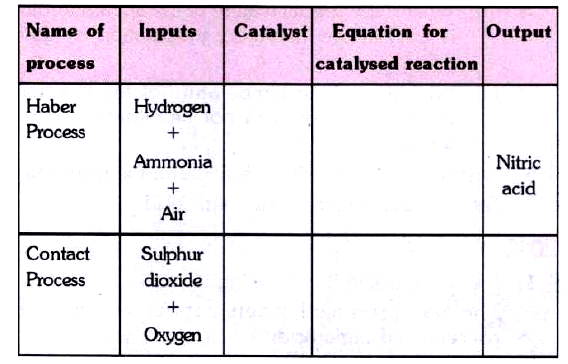An industrial process used for the production of hydrogen gas on a large scale.
The correct Answer is:Bosch process
Step-by-Step Solution:
Step 1: Production of Water Gas
- The Bosch process begins with the reaction of carbon with hot steam.
- This reaction occurs at a high temperature of about 1200 degrees Celsius.
- The chemical reaction can be represented as:
C+H2O→CO+H2
- In this step, carbon (C) reacts with water (H2O) to produce carbon monoxide (CO) and hydrogen gas (H2). The resulting mixture of CO and H2 is known as water gas.
Step 2: Separation of Hydrogen from Carbon Monoxide
- The next step involves the separation of hydrogen from carbon monoxide in the water gas produced in Step 1.
- This is achieved by reacting the water gas with excess steam.
- The reaction takes place at a temperature of approximately 450 degrees Celsius.
- In this step, iron(III) oxide (Fe2O3) acts as a catalyst, and chromium(III) oxide (Cr2O3) acts as a promoter to enhance the reaction.
- The chemical reaction can be represented as:
CO+H2O→H2+CO2
- Here, carbon monoxide (CO) reacts with water (H2O) to produce additional hydrogen gas (H2) and carbon dioxide (CO2).
Final Outcome:
- The overall process of the Bosch process effectively produces hydrogen gas on a large scale by first generating water gas and then separating hydrogen from carbon monoxide.
---
- The Bosch process begins with the reaction of carbon with hot steam.
- This reaction occurs at a high temperature of about 1200 degrees Celsius.
- The chemical reaction can be represented as:
C+H2O→CO+H2
- In this step, carbon (C) reacts with water (H2O) to produce carbon monoxide (CO) and hydrogen gas (H2). The resulting mixture of CO and H2 is known as water gas.
- The next step involves the separation of hydrogen from carbon monoxide in the water gas produced in Step 1.
- This is achieved by reacting the water gas with excess steam.
- The reaction takes place at a temperature of approximately 450 degrees Celsius.
- In this step, iron(III) oxide (Fe2O3) acts as a catalyst, and chromium(III) oxide (Cr2O3) acts as a promoter to enhance the reaction.
- The chemical reaction can be represented as:
CO+H2O→H2+CO2
- Here, carbon monoxide (CO) reacts with water (H2O) to produce additional hydrogen gas (H2) and carbon dioxide (CO2).
- The overall process of the Bosch process effectively produces hydrogen gas on a large scale by first generating water gas and then separating hydrogen from carbon monoxide.
Similar Questions
(i)Name the industrial method for the production of hydrogen gas.
(ii)Name the catalyst used in the above process.View SolutionIn Bosch's process, which gas is utilised for the production of hydrogen gas
View SolutionCopy and complete the following table relating to important industrial process. Output refers to the product of the process not the intermediate steps.
 View Solution
View SolutionComplete the table relating to an important industrial process .[Output refers to the product of the process]
 View Solution
View SolutionSodium hydroxide is produced on a large scale
View SolutionIn one of the industrial processes for manufacture of sodium hydroxide a gas x is formed as by product .The gas x reacts with lime water to give a compound y which used as a bleaching agent in chemical industry. Identify x and y giving the chemical equation of the reactions involved
View SolutionName the method used for obtaining ammonia on a large scale .
View SolutionDiborane is prepared on large scale by
View SolutionRearing of silkworm is done on large scale in
View SolutionIn Hall's process , in the production of Al, carbon is used as the anode material. The reactions are
View Solution

